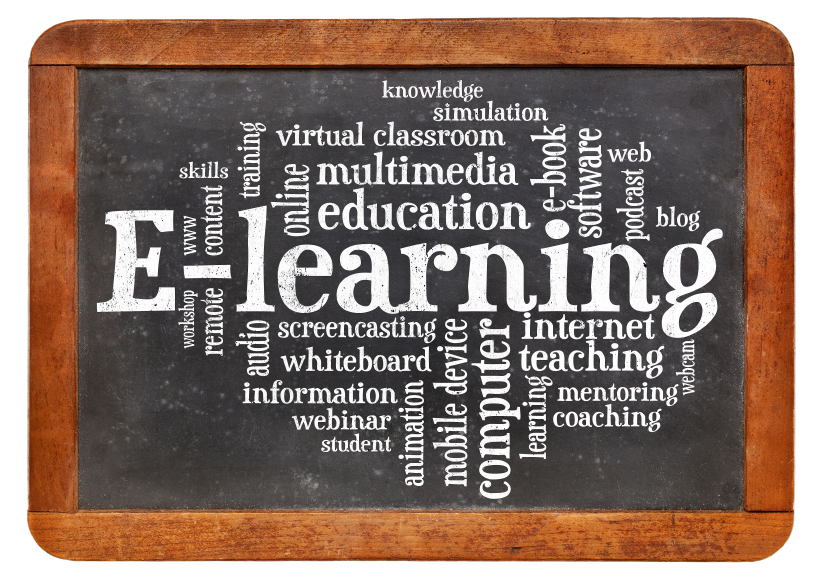5 tips to make eLearning work

Having provided Medical Information training for more than 20 years, there is a growing trend for digital training (eLearning modules, webinars, videos). We have replaced some of our face to face training courses with webinars and eLearning modules as demand grows. But does digital learning really work? Can and should you replace face to face staff training with online courses? Find out how blended learning and my five tips can help you.
The potential advantages of digital learning…
The advantages are compelling and these are the main drivers for digital learning:
– time – access the content when it is convenient for you, whatever your time zone
– pace – learn at your own pace
– location – learn in a convenient place, at work, at home or on the move
– reduce your training costs
– consistent training across your organization
But not all digital courses are great…
Just as some teachers are inspiring, others are dull and so it isn’t surprising that there are good and poor digital courses out there.
I have ‘suffered’ some terrible online courses recently. Long videos with rambling and repetitive content… car horns and dogs barking in the background… and text heavy slides to read. And just because you click ‘next’ makes it an interactive course. Yes it is digital, but it wasn’t a great learning experience.
So can digital learning replace face to face courses?
Yes, but with some caveats. I favour the current trend for blended learning, which uses a combination of digital, face to face and on the job training. Digital learning is one strand in your staff training strategy.
Take the example of new staff or mass staff training. Training can take a considerable amount of time and drains your resource as existing staff are pulled in to become trainers. Digital is a great way to deliver core skills, in a time and cost efficient way. The learner takes responsibility for completing the courses. You can then focus on filling the knowledge gaps with internal or external face to face courses, feedback and on the job discussions.
My top 5 tips to make eLearning work
One: Does the topic suit digital learning?
Not all topics adapt easily to the digital environment. If a course about manual handling relies on seeing and giving feedback about body position, unless you’re using webcams, this is not going to be easy online.
But if your topic is about conveying core knowledge – providing you have clear, concise and rich content – eLearning can be a great option as long as digital training is adapted to the topic. For example, our course about writing a Medical Information response document uses a step by step guide, whilst the English grammar course is packed with quizzes to test your knowledge, and the how to search PubMed course has videos showing exactly how to search.
Two: Is the topic customised to your needs?
At times a ‘one size fits all’ course covering a core skill is fine. But sometimes the course needs to reflect your processes, your values or even your terminology to make it totally relevant.
You could write or commission your own bespoke digital courses. For example we have taken our core modules and tailored them for clients. So staff across Asia Pacific were trained on how to write a response letter to their company specification. Roll out was simple as we hosted all the material on our eLearning platform with no IT set-up.
But if bespoke isn’t possible, use blended learning. Learn the core generic skills online and then tweak the skills with on the job learning or specific training.
Three: Prioritise and make time for your eLearning
As I review the monthly course completions, there is an increasing trend to complete eLearning modules at home in your own time. Whilst face to face training secures time in your diary, the ultimate flexibility of eLearning courses means they are easily moved and are given less priority in the working day.
So if you’re a digital learner take responsibility for your learning and always assign time in your diary to get the course done. And if you’re the digital trainer, send reminders and set deadlines for course completions.
Four: Is there tutor backup?
Probably one of the biggest gripes about digital learning. You have a question and there is no one to ask.
Make sure there is a mechanism for tutor backup, whether it is email support or face to face sessions.
Five: And finally … digital courses shouldn’t be the latest cure for insomnia
Listening to long videos or reading text-filled pages online with an occasional click is going to do little for your engagement and motivation.
Digital learning works best in small, concise chunks. The current trend is to nibble and graze through the information, rather than sitting down for a long banquet-sized session. Aim for 10-20 minute eLearning modules, to fit around working life, plus an option to leave at any point and then return back to the same point.
If you’re designing courses, do think about adding interactive elements into your sessions – quizzes and games to truly test skill.
About Jayne Packham
 Jayne is an experienced trainer for the pharmaceutical industry in ABPI Code of Practice and Medical Information/Affairs. She has a suite of eLearning courses aimed at Medical Affairs, covering an Introduction to Medical Information, how to write responses letters, English grammar and punctuation, evaluating clinical papers and searching skills – PubMed, Cochrane, clinicaltrials.gov.
Jayne is an experienced trainer for the pharmaceutical industry in ABPI Code of Practice and Medical Information/Affairs. She has a suite of eLearning courses aimed at Medical Affairs, covering an Introduction to Medical Information, how to write responses letters, English grammar and punctuation, evaluating clinical papers and searching skills – PubMed, Cochrane, clinicaltrials.gov.
Since the eLearning launch in October 2015, there have been more than 250+ course enrolments. Prices range from £25 (ex VAT) to £335 (ex VAT) for the all course bundle, with extra discounts for groups.
Core course are available which can be tailored and hosted for companies needing mass training. Please contact us for more information.
